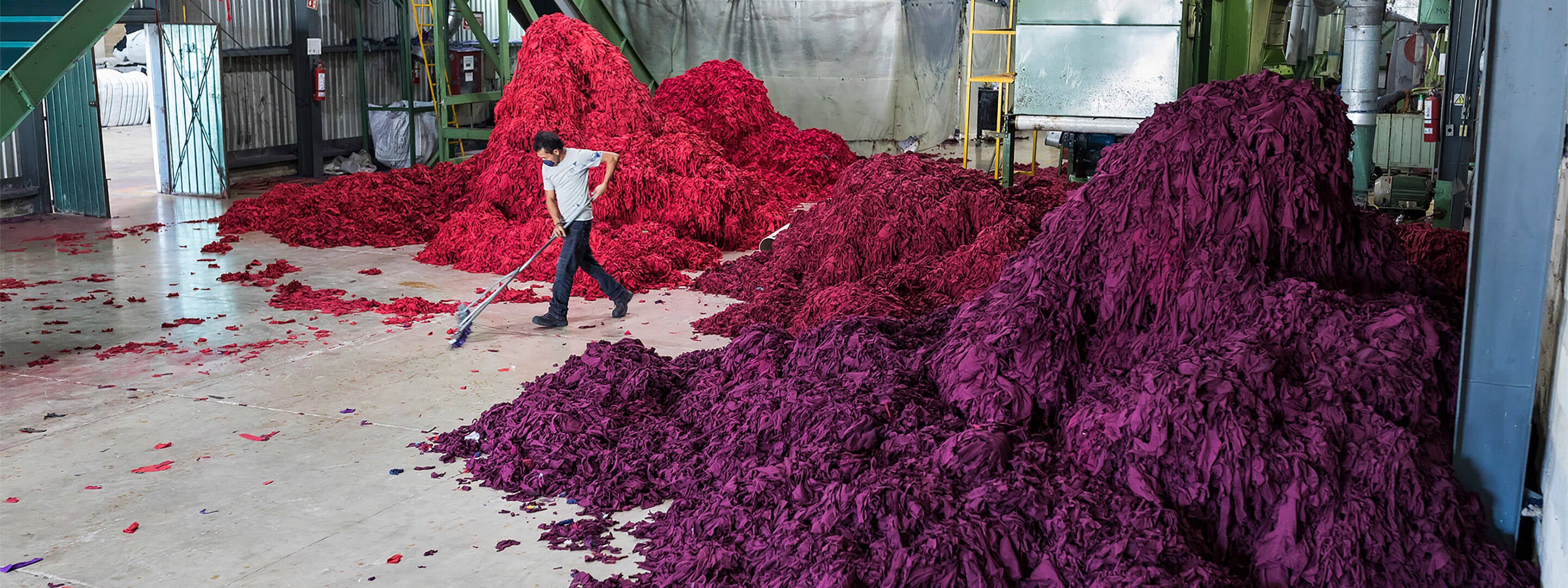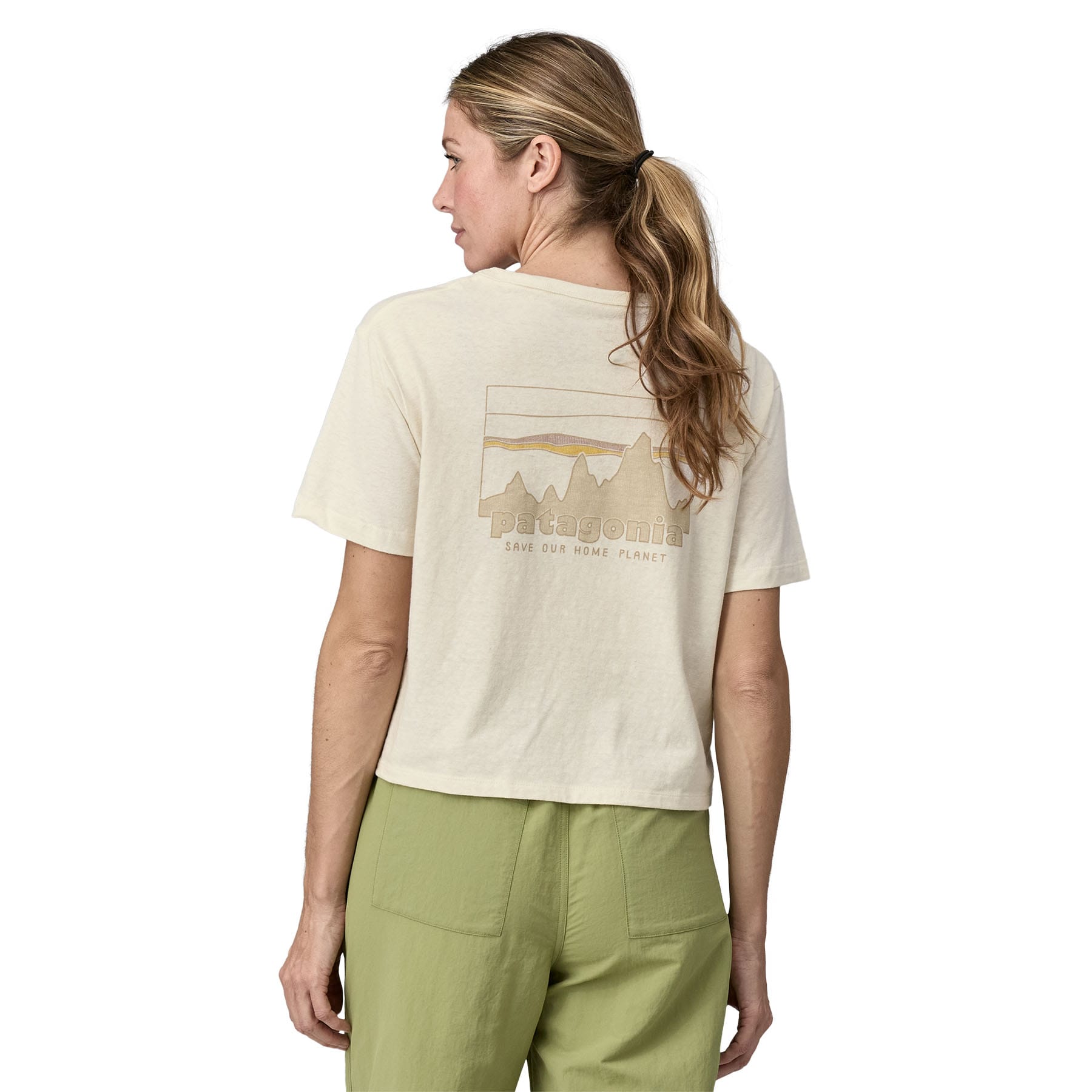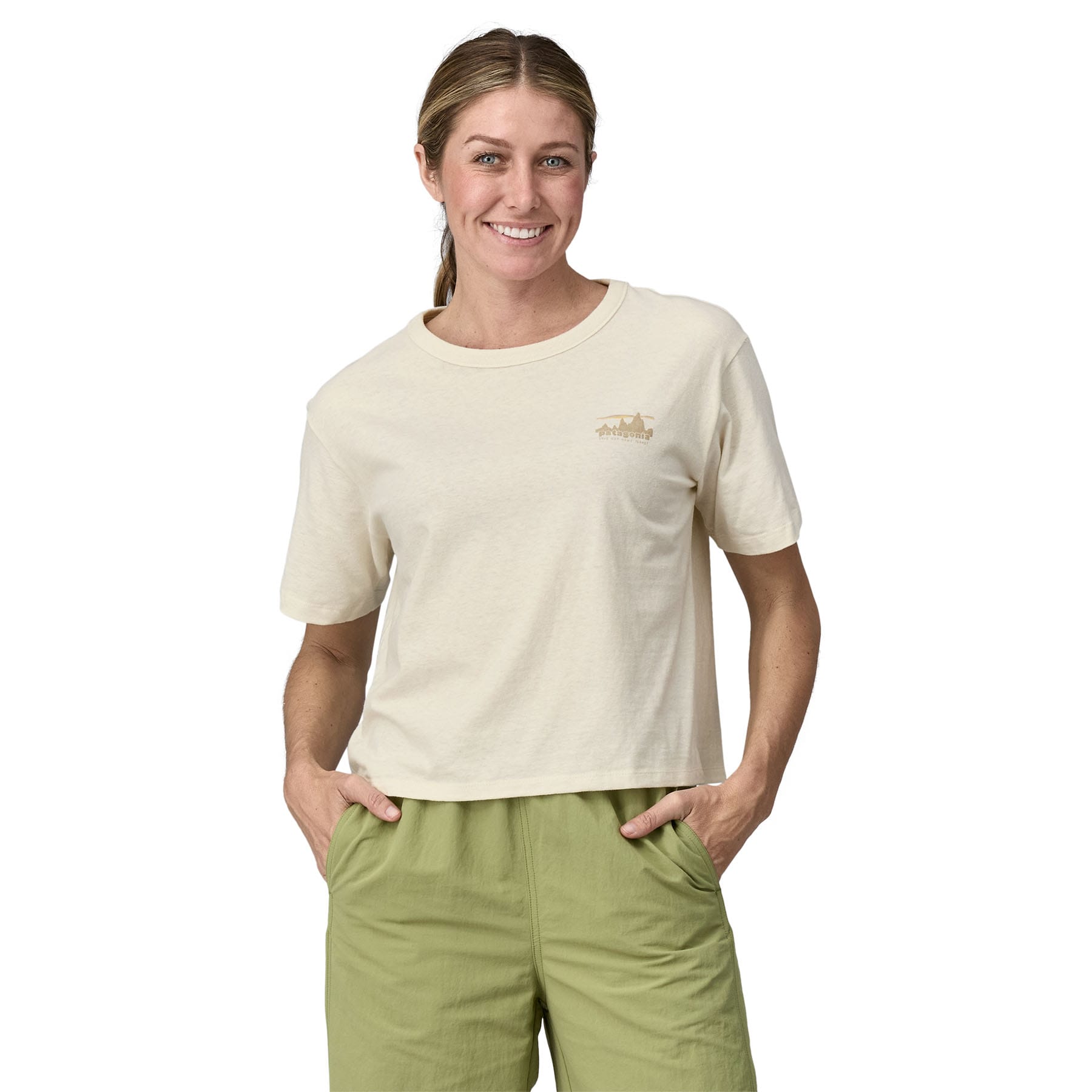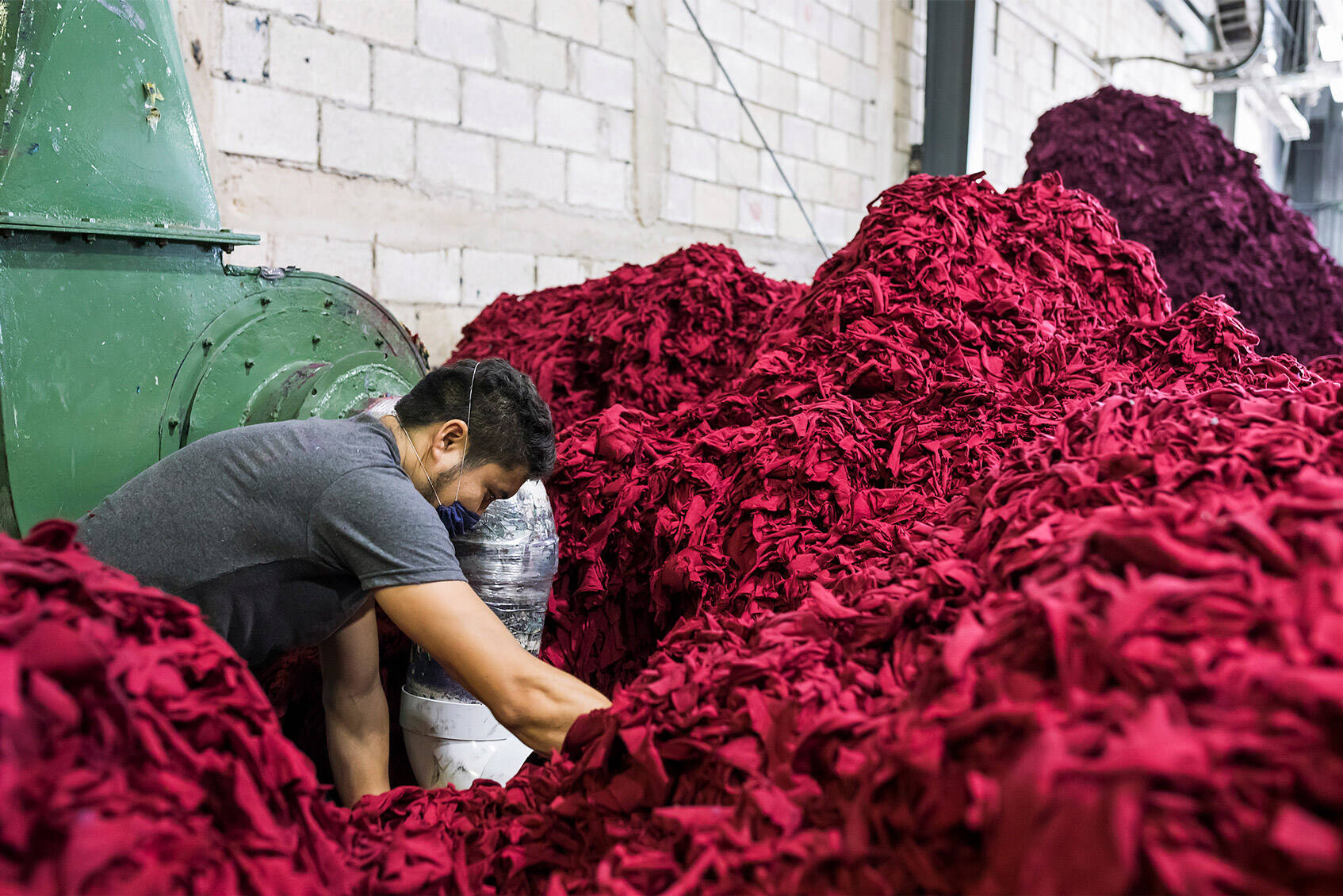Recycled Cotton
Why?
Producing a single pound of conventional cotton takes about 254 gallons of water. Add that to the carbon footprint of preparing the soil, the harmful pesticides that impact field workers, cultivating the plants and harvesting the crops, then scale up that number to encompass all the cotton grown in the world—and you get a significant environmental cost. By using recycled cotton, Patagonia extends the life span of a fiber that has already been created, uses fewer environmental resources and still has that soft, comfortable feel.
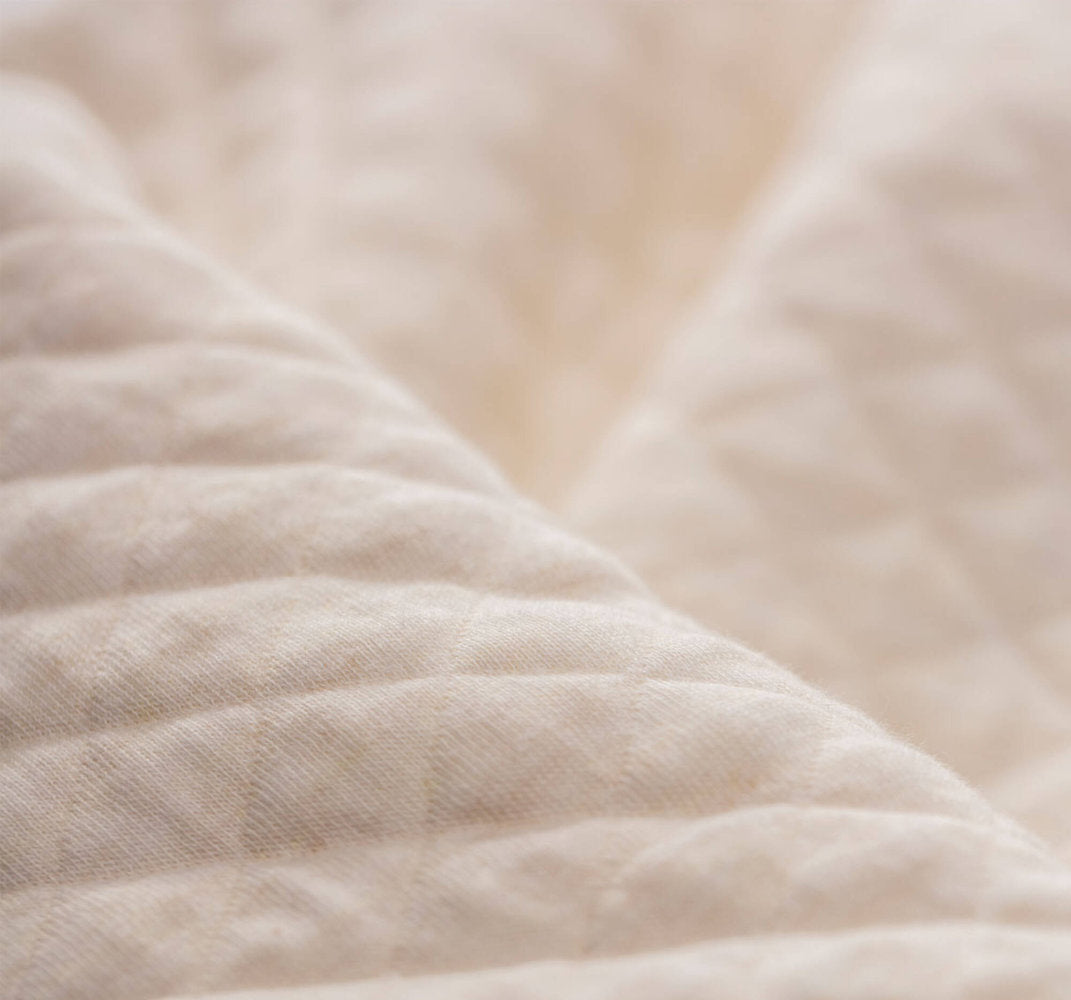
By making clothes with recycled cotton, Patagonia uses fewer environmental resources than what’s needed to grow virgin cotton.
By making clothes with recycled cotton, Patagonia uses fewer environmental resources than what’s needed to grow virgin cotton.

82%
The percentage of CO₂e emissions reduction per kilogram of cotton fiber Patagonia achieves by using recycled cotton instead of conventional virgin cotton, based on the Higg Materials Sustainability Index, version 3.6.
Where We Are
Patagonia's supply-chain partners collect pre-consumer scraps from our sewing factories and use only the cotton that meets our quality standards. Then, the fibers are mechanically shredded, so they can be re-spun into new yarn. Most of our recycled cotton is blended with recycled polyester. This process extends the length of the fibers to make the perfect yarn for sweatshirts and T-shirts.
For the Spring 2024 season, 37% of our cotton fabrics by weight are made with recycled cotton. Using recycled cotton fiber reduces CO₂e emissions by 82% per kilogram compared to using conventional virgin cotton fiber, based on the Higg Materials Sustainability Index, version 3.6.
What’s Next
Patagonia is focusing on four types of cotton: organic cotton, recycled cotton, Cotton in Conversion (cotton from farmers who are transitioning their crops from conventional to organic cotton) and Regenerative Organic Certified® Cotton.
Our goal is to incorporate recycled cotton into our raw materials whenever possible. We are constantly working with new supply-chain partners and vetting new technologies that will help us get there.



